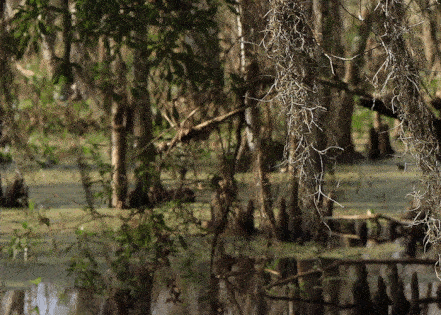Today, I am exploring part of America’s Deep South, specifically the boot-shaped Pelican State of Louisiana! My national park and monument quest has brought me to the Barataria Preserve unit of Jean Lafitte National Historic Park!
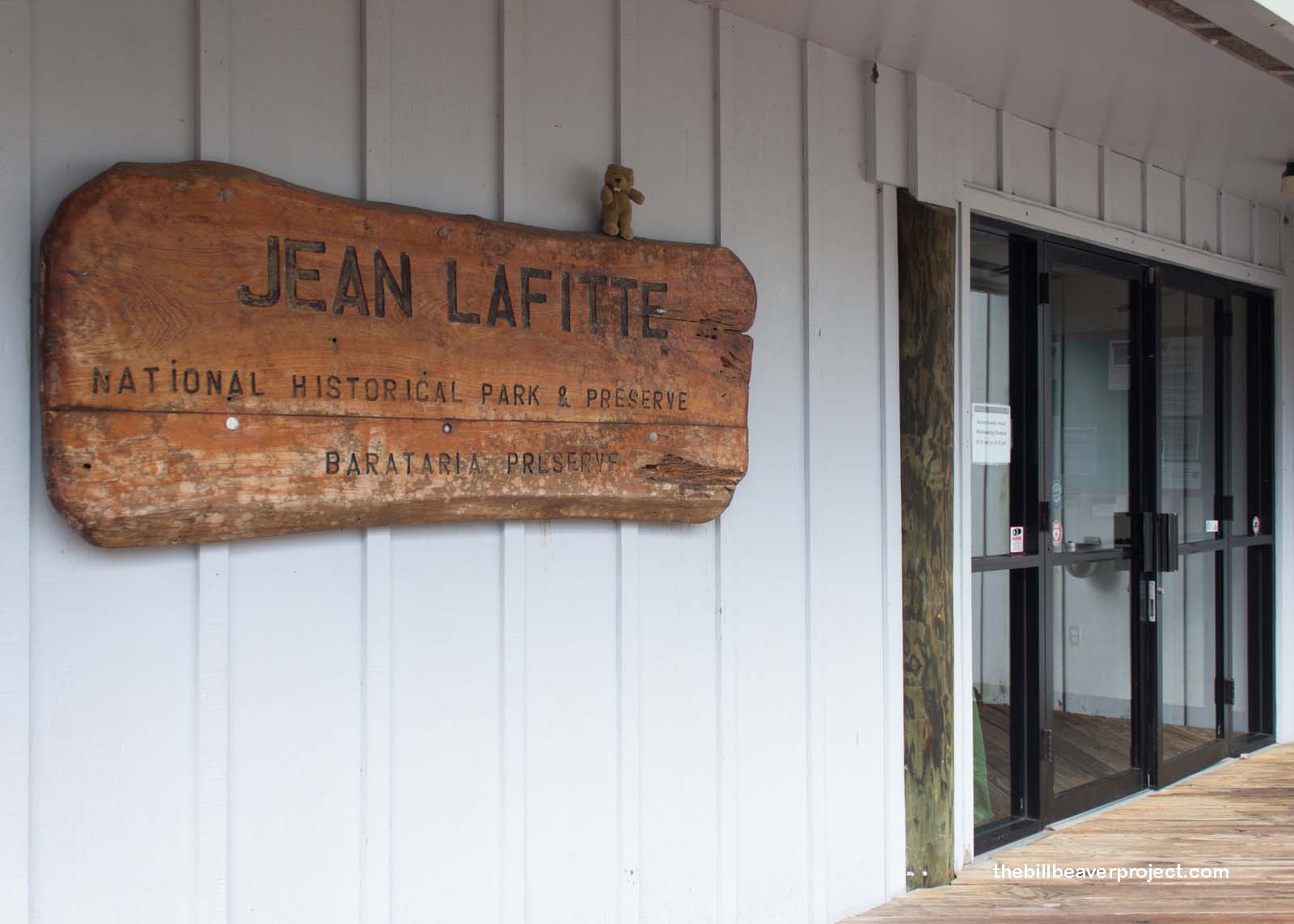 |
Jean Lafitte was a French privateer who preyed upon Spanish ships along the Gulf shore (Spanish main) starting in 1810. His hideout was here in Barataria Bay, an important route into New Orleans, and for this reason, Jean Lafitte’s services were crucial in the fight against the British during the Battle of New Orleans in 1815, and he and his Baratarians received a full pardon from President Madison after the war of 1812 finally ended!
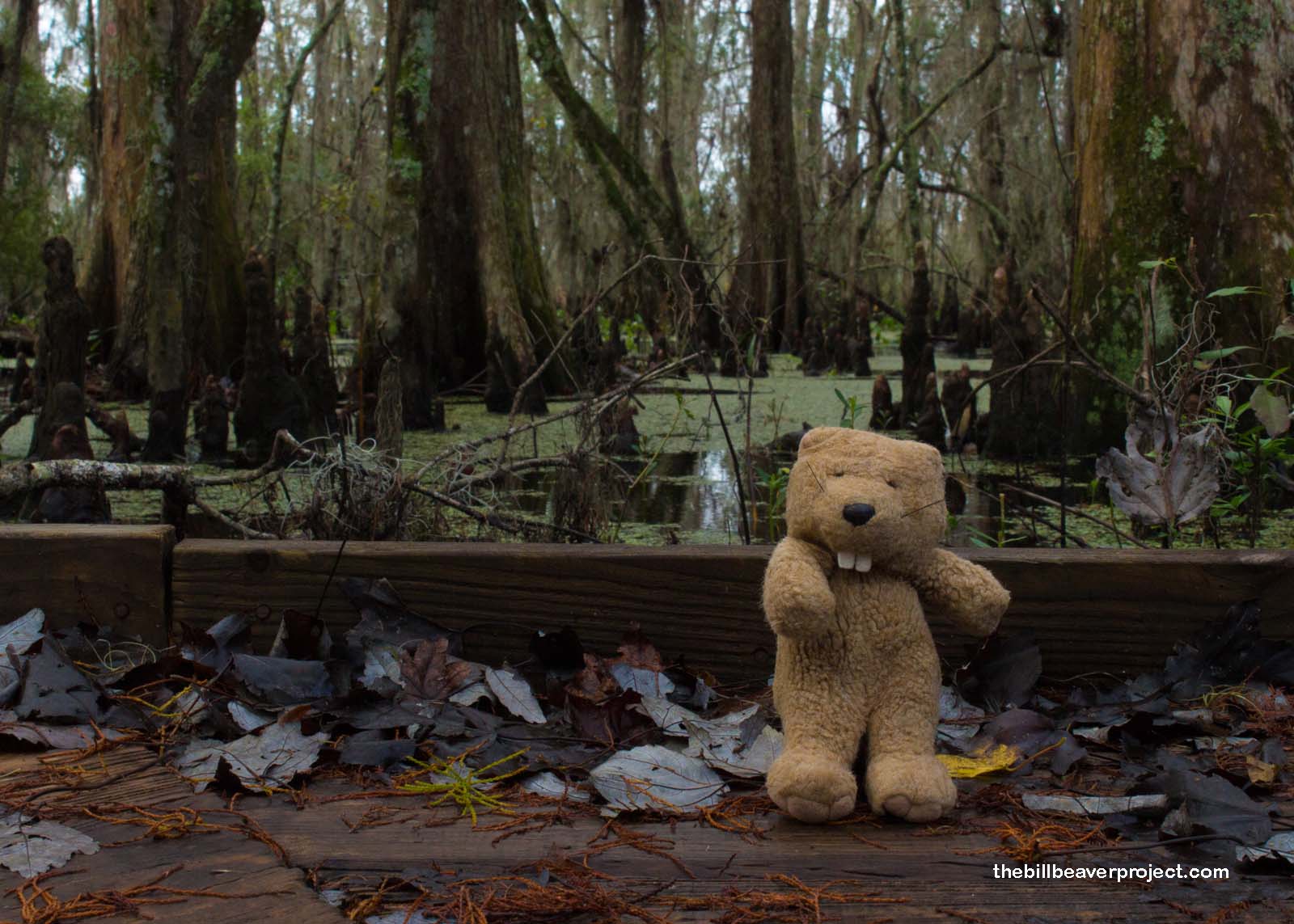 |
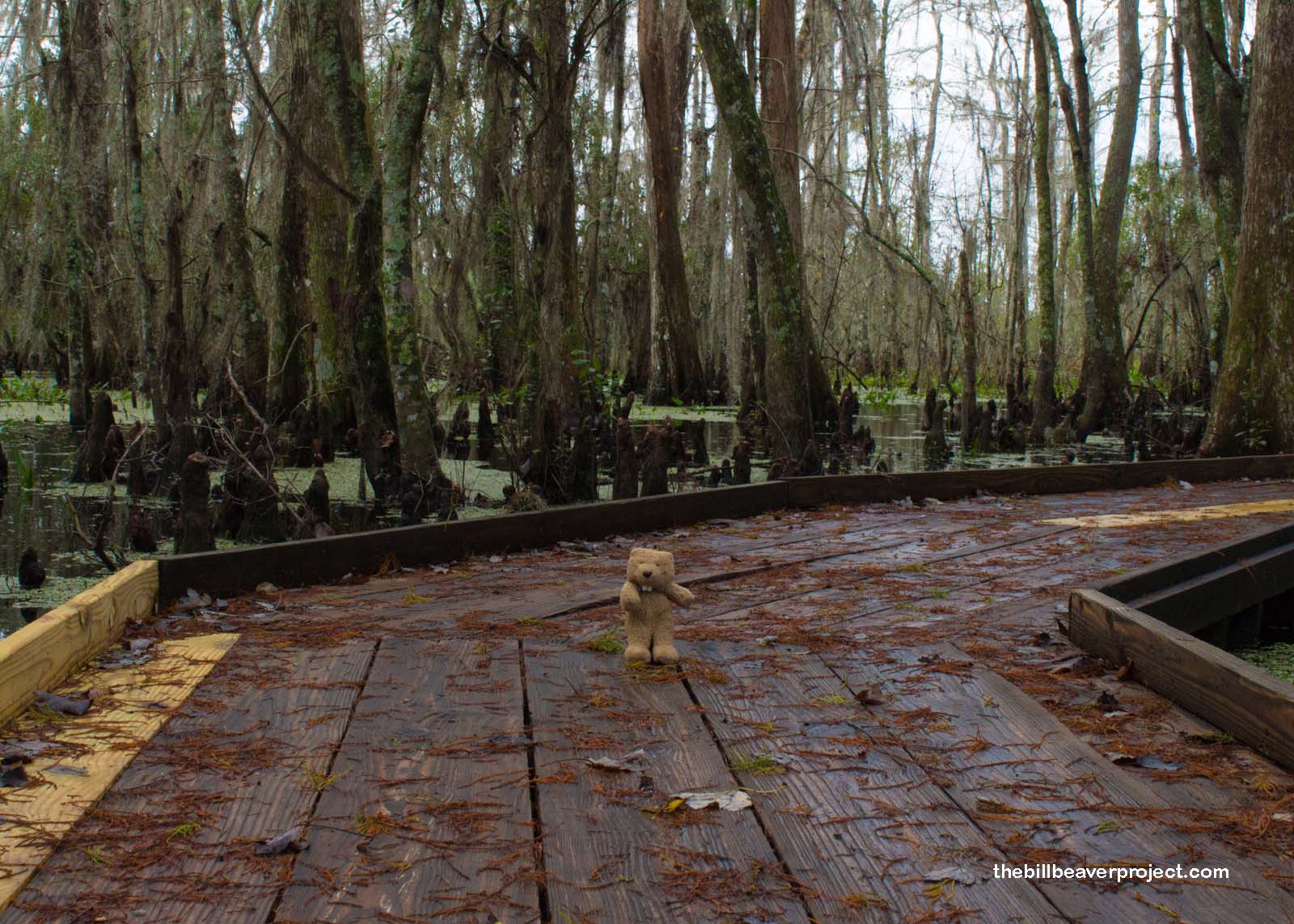 |
Now, this national historical park preserves 23,000 acres of bayou around Jean Lafitte’s original hideout. Only a small fraction is accessible by boardwalk trail, but the weather was perfect for a stroll, starting on the Palmetto Trail!
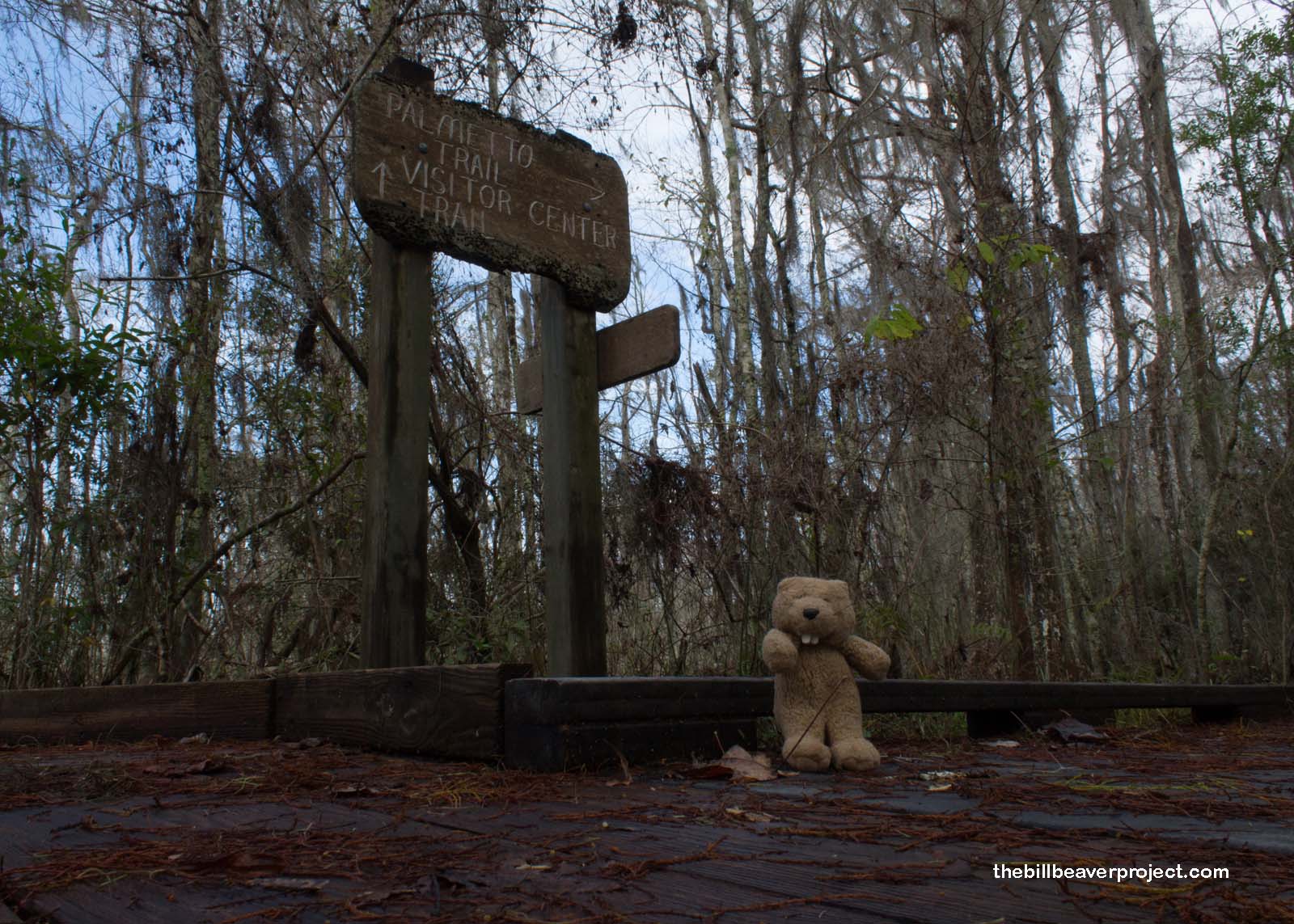 |
Most of the trees here were tall, bald cypresses, loaded with Spanish moss swaying in the steady Gulf stream, their knobby roots sticking out of the glassy swamp water! However, further down the Palmetto Trail, I started to see a lot more (you guessed it) palmettos! These dwarf palmettos are one of the hardiest palm species, able to survive short spells at -0.4°F! They also cover secret canals like fans at a masquerade, giving this whole stretch of trail an air of mystery!
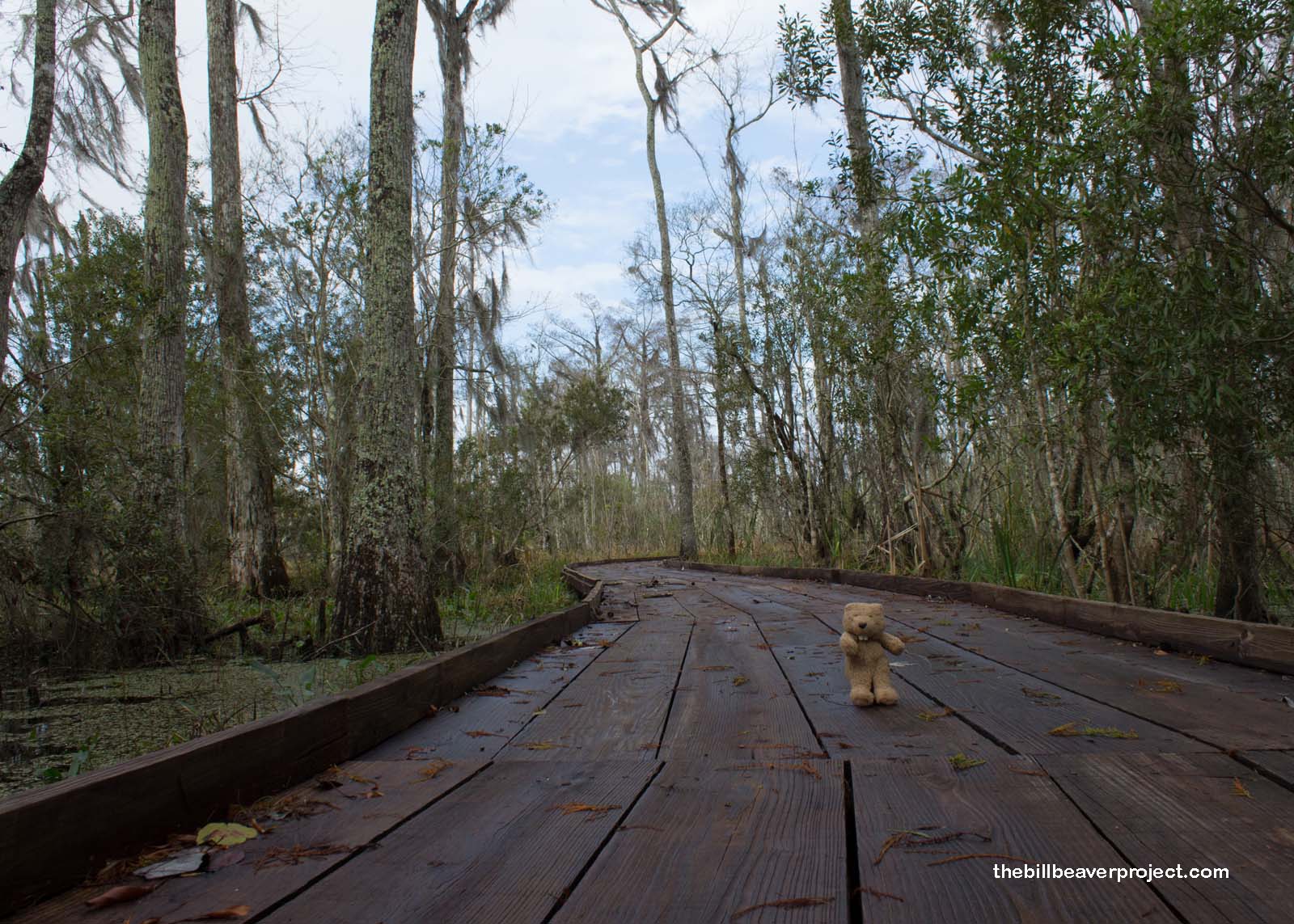 |
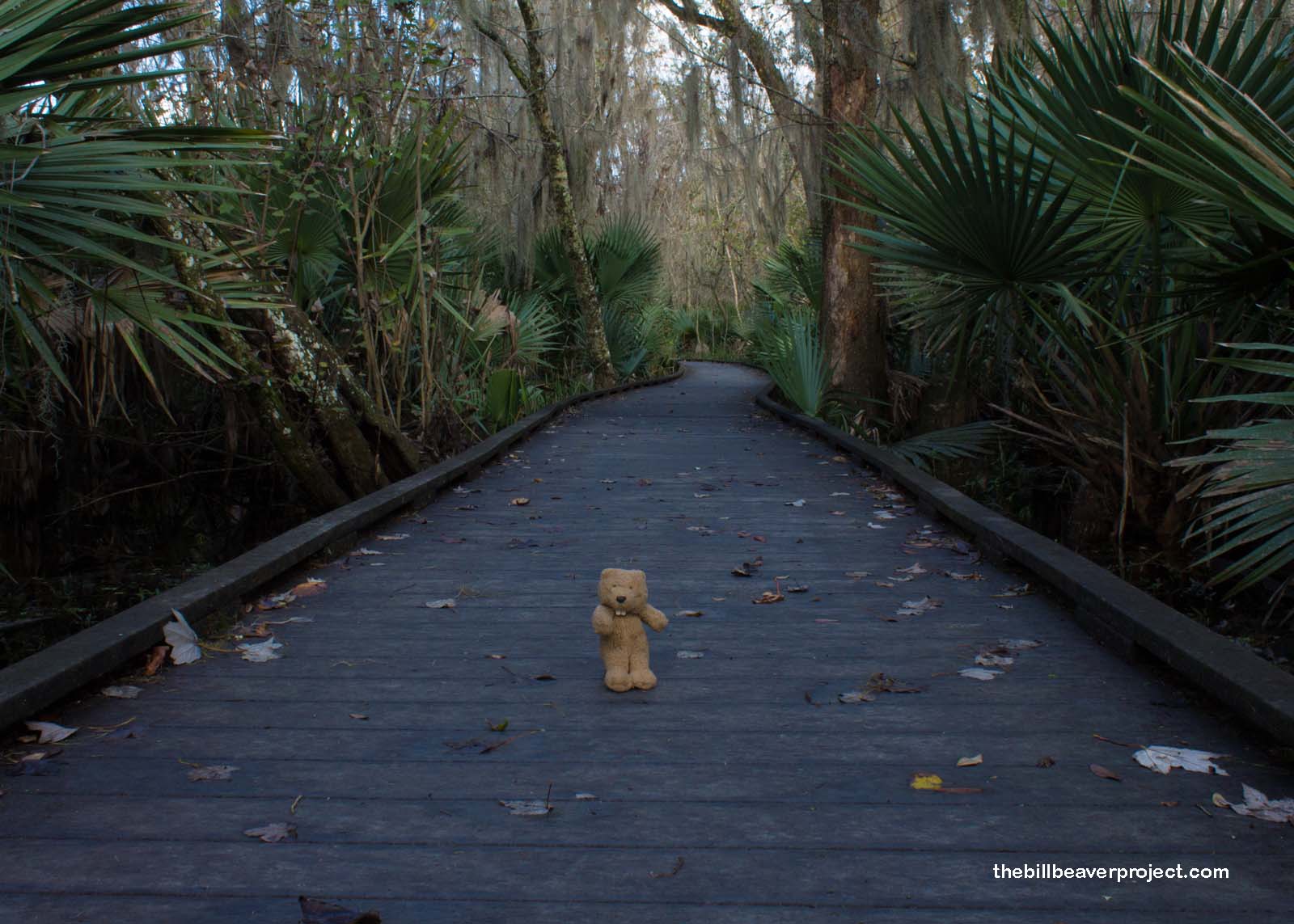 |
As I walked along, the boardwalk turned into trail, which was actually a natural levee formed by floods between Bayous Coquille and des Familles. A bayou, just in case you were wondering, is the marshy outlet of a lake or river. These two bayous originally fed into Lake Salvador and the Mississippi River, respectively, but now they are more marsh than outlet. The water is glassy and still, and I kept one eye always on the water, just in case a gator was watching!
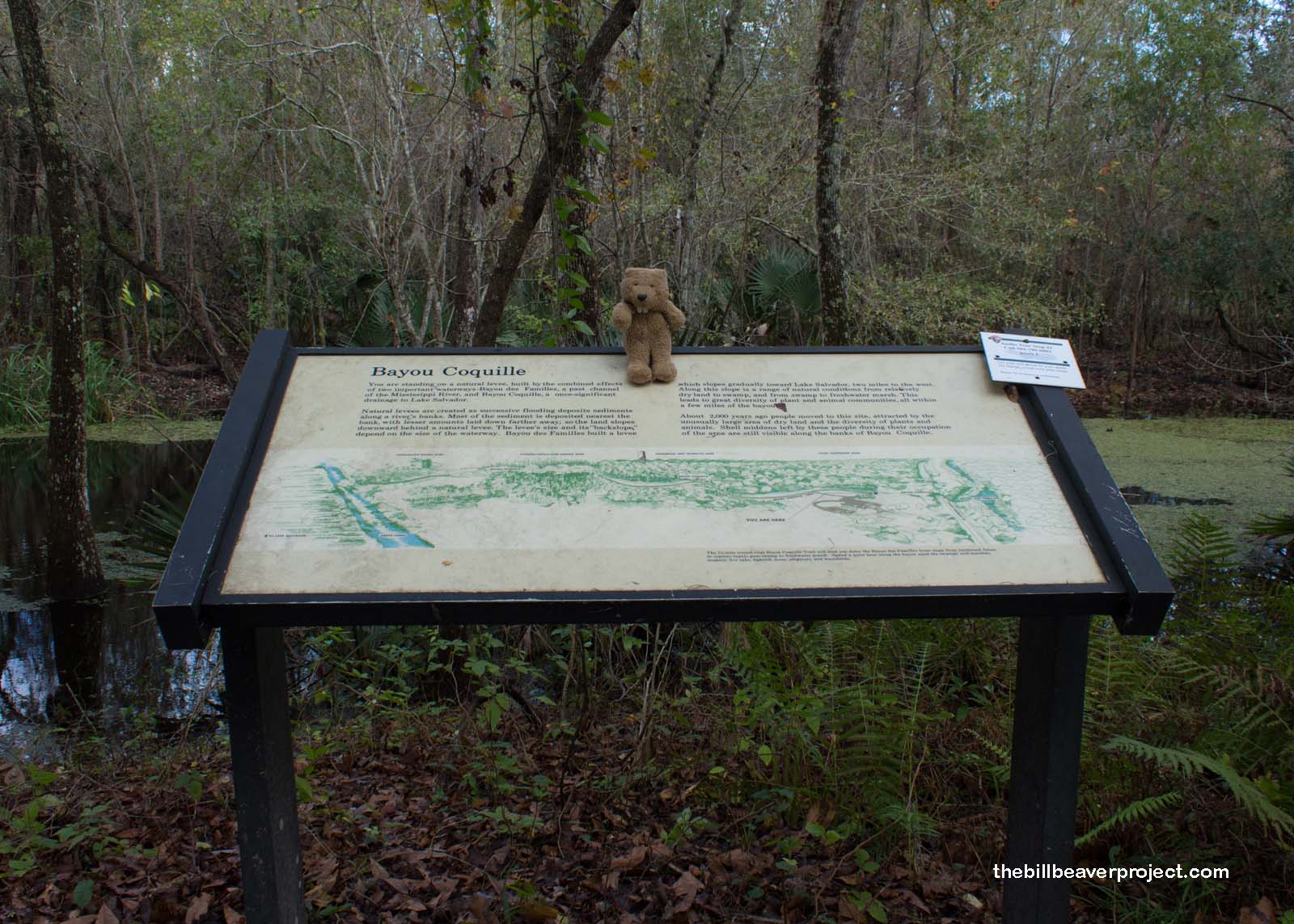 |
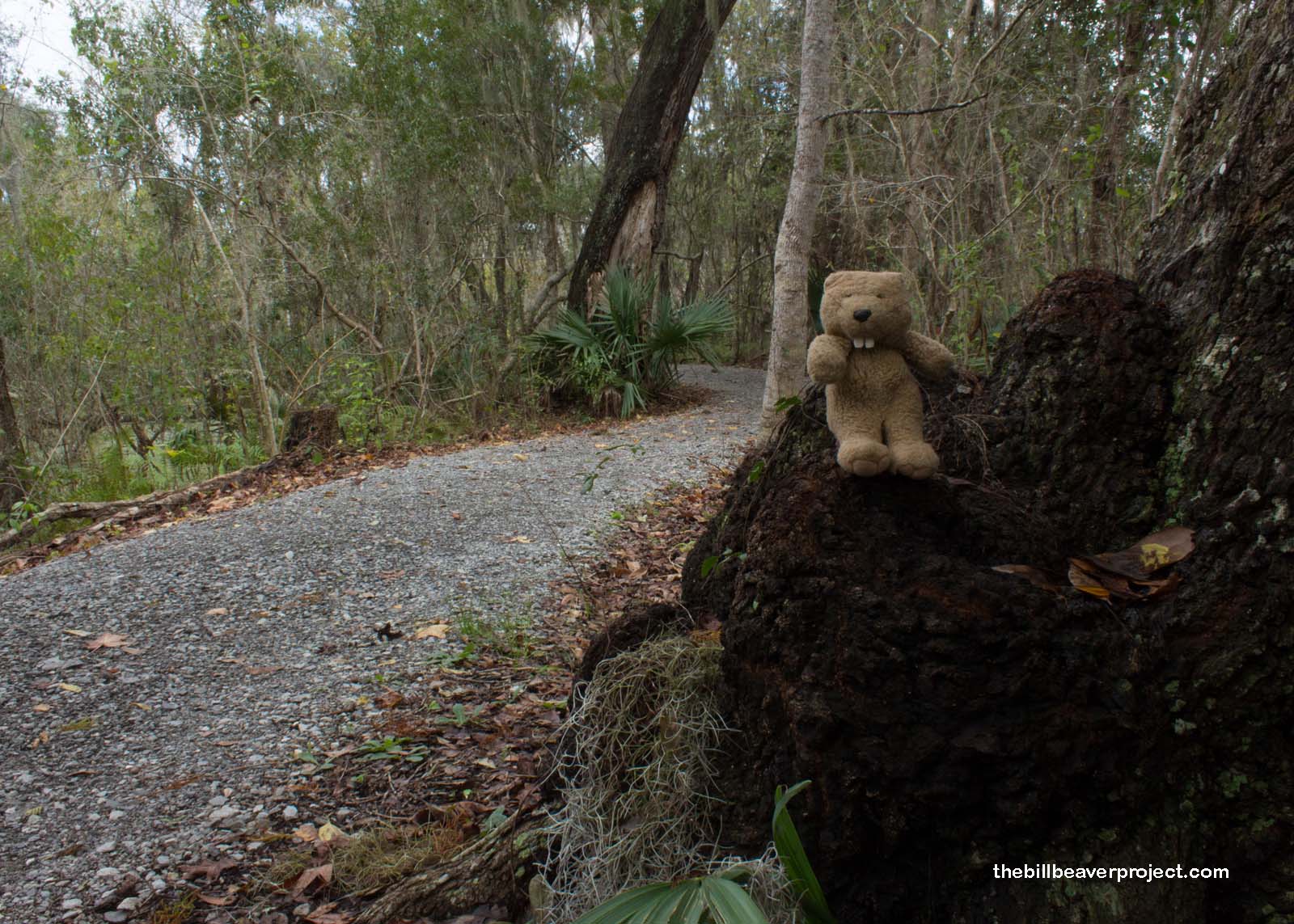 |
Just down the trail, which was crawling with crawdaddies, I found an ancient midden left behind by a Native American tribe (probably the Chitimacha). Middens are pretty common relics of native communities where shellfish was an important part of the diet. Archaeologists have found all sorts of artifacts, and even the bodies of ancestors, buried in these shell mounds that stretch down deep into the ground! Most middens have been desecrated for use as road filler and to make way for industry centers, but those that remain have been an invaluable resource for learning about the original people of the area!
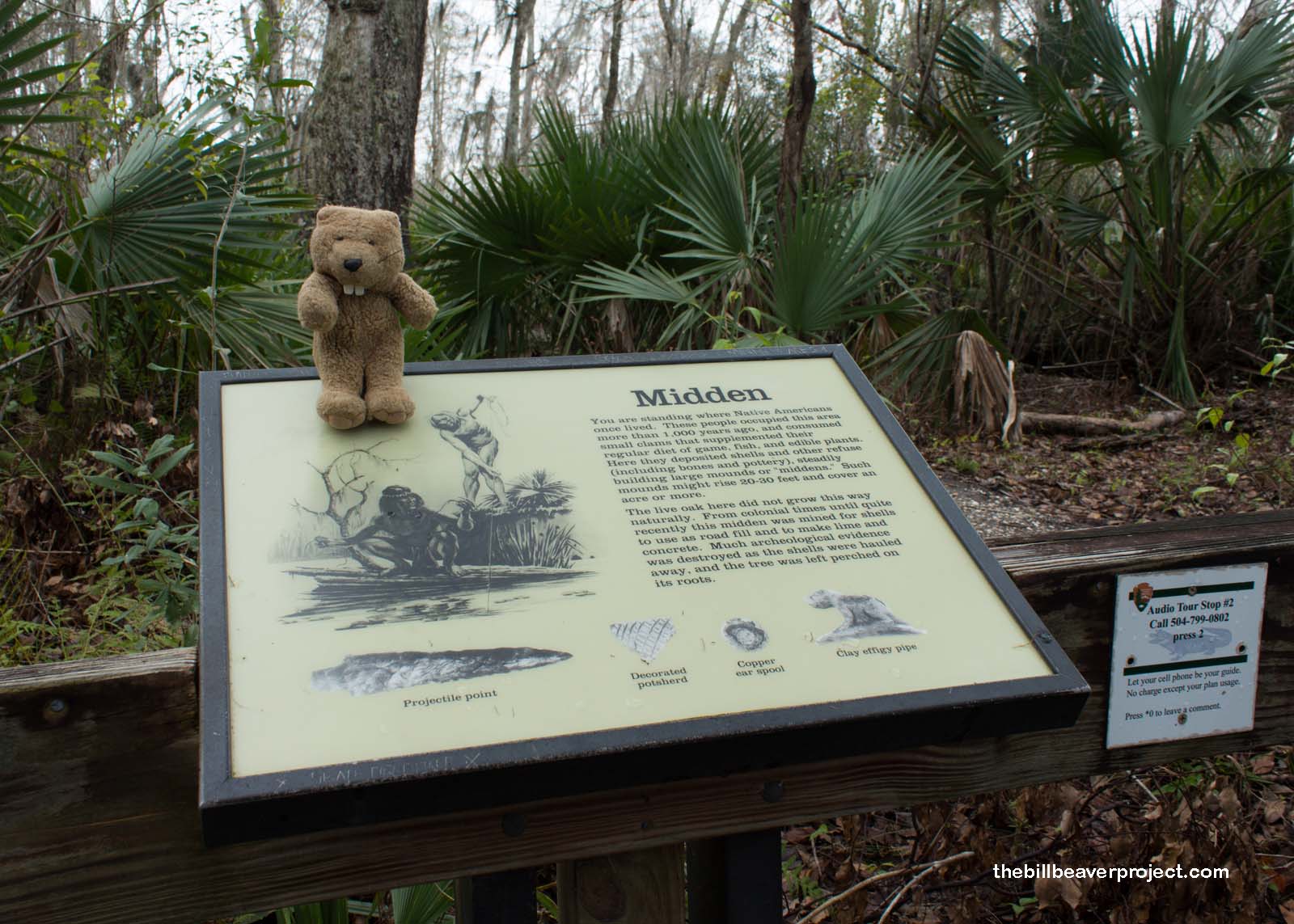 |
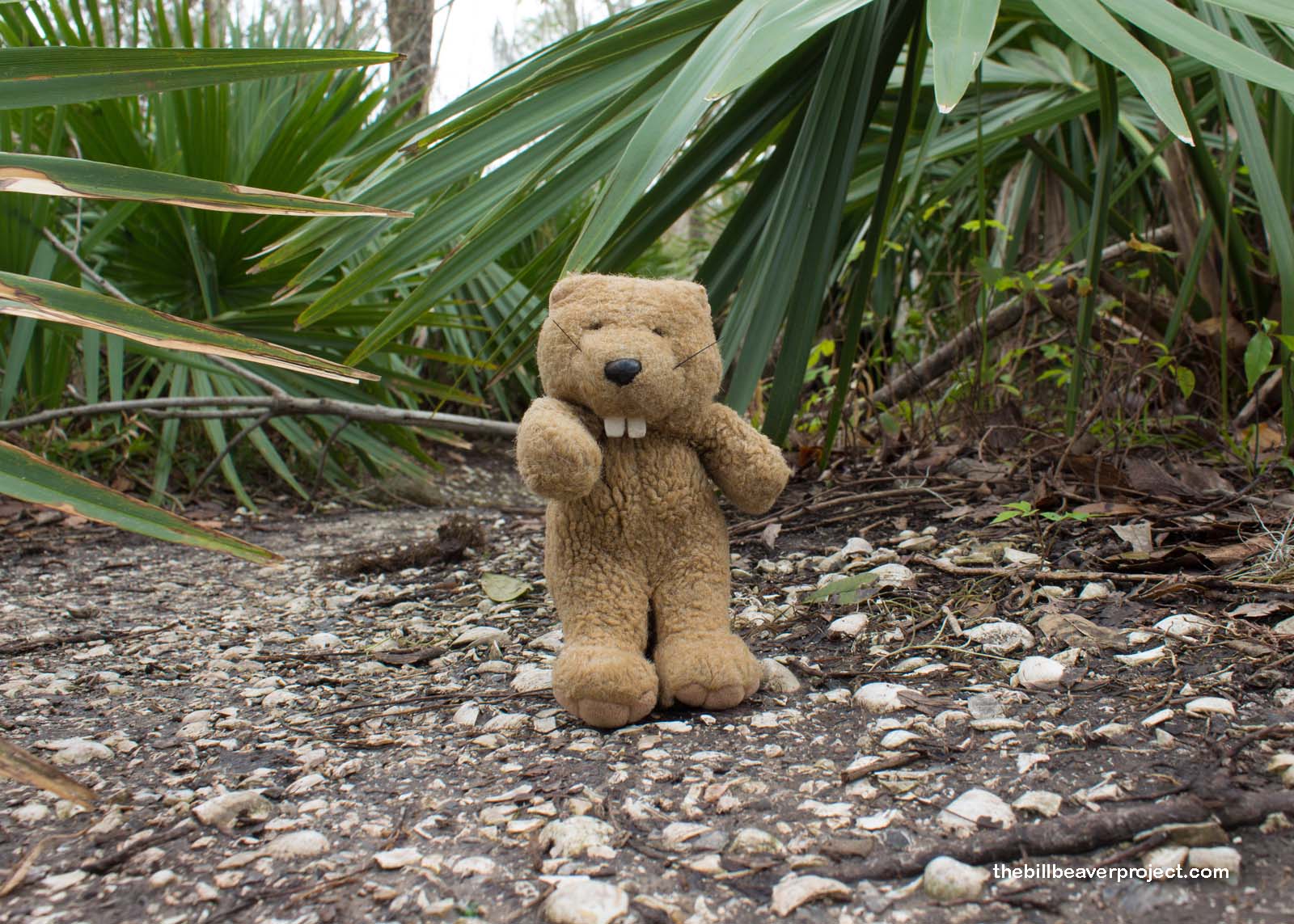 |
I walked a little further, looking hard for alligators in the glassy water, but they were either too well camouflaged or just not ready to make an appearance in the winter weather. Luckily, I didn’t run into one directly and get eaten up, just like the trail did!
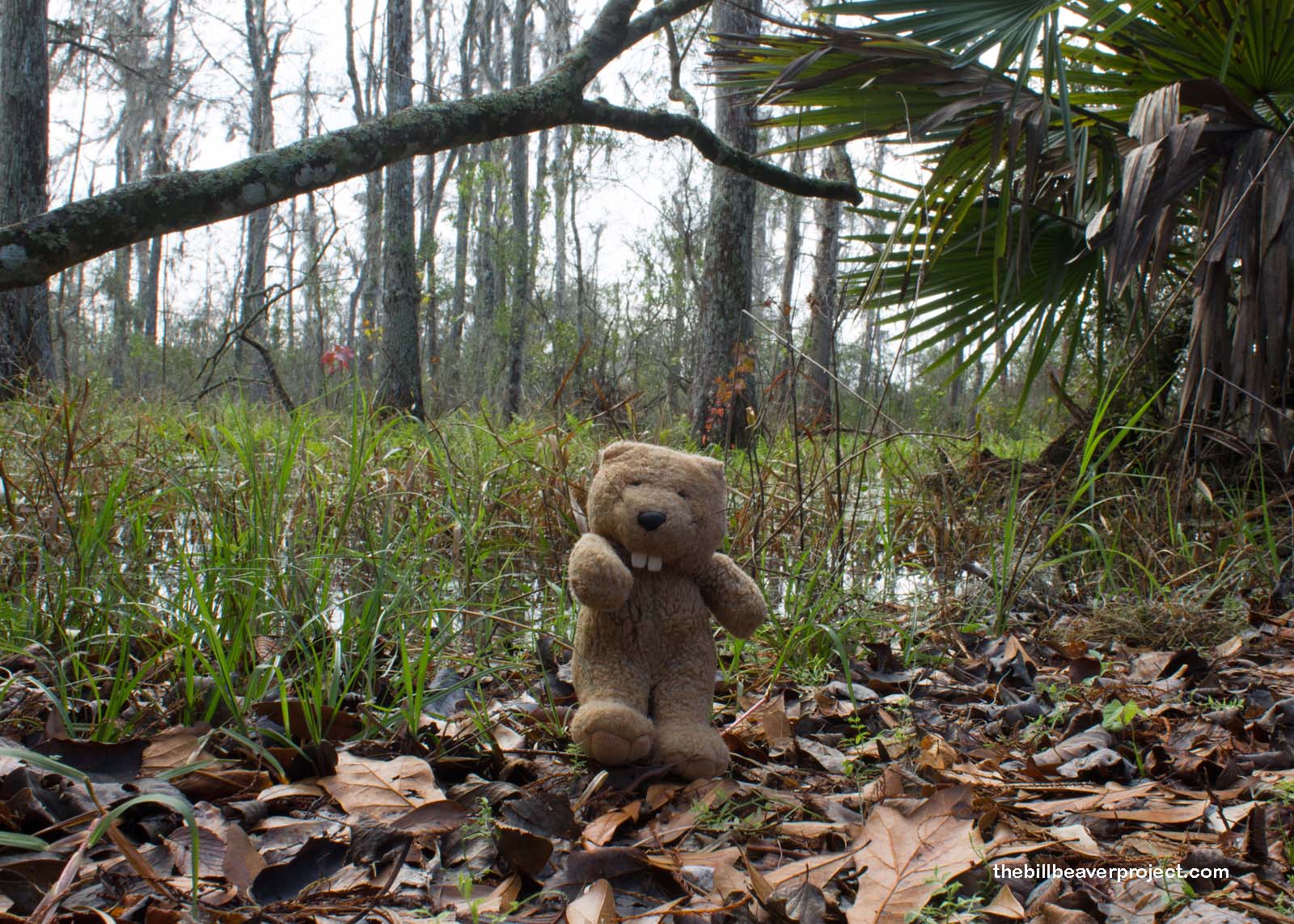 |
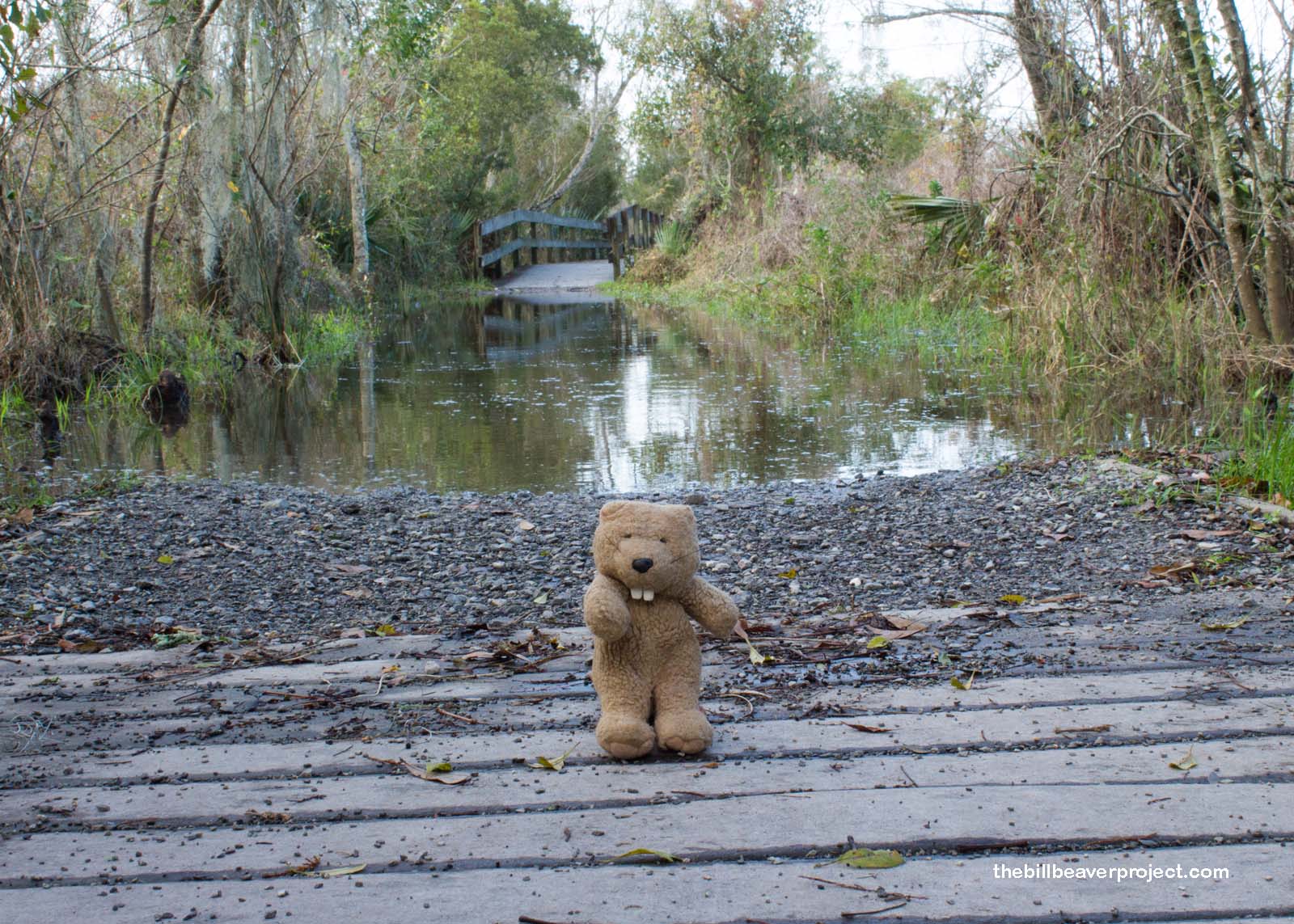 |
The flooded trail meant I could go no further, but I took my time on the walk back, enjoying the calm. The bayou is a patient place, and I could stand to learn some more patience!
Take it Big Easy!

